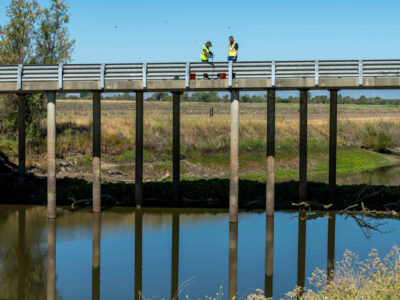Monitoring for 2021
Thiobencarb monitoring starts tomorrow, April 27. We base the monitoring on planting dates and timing of thiobencarb applications from the county agricultural commissioner offices sharing dates from notices of intent.
Monitoring will take place on Tuesdays, Wednesdays and Thursdays due to concurrent sampling in the Rice WDR and the Pyrethroid TMDL. The Rice WDR surface water monitoring is a modified assessment schedule at seven sites and to include parameters beyond pesticides. The Pyrethroid TMDL is a more extensive schedule, which evaluates water column and sediment toxicity for lambda-cyhalothrin. The total thiobencarb monitoring will remain a ten-week schedule with the same number of samples as previous years.
Changes to the REI and field posting
Both Valent and Generic Crop Sciences assure us the container label language includes the 12-hour restricted entry interval (REI). Any containers with labeling for a 7-day REI requires supplemental labeling present and available (in-hand) at time of application. You can receive the supplemental label from your Valent representative, thiobencarb suppliers or a link to the CRC pesticide update provided in a previous e-communication on March 31.
Here’s a link to the thiobencarb water hold table with information on other pesticides.
For more information, contact the CRC’s Industry Affairs Manager Roberta Firoved at rfiroved@calrice.org or (916) 206-5039.



